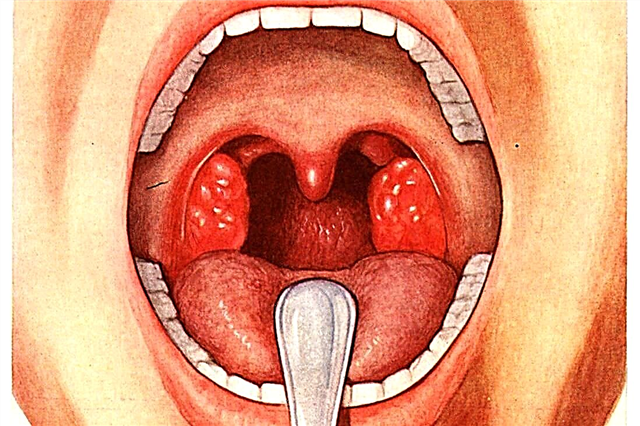
Women who are planning a pregnancy have probably heard about implantation, but not everyone knows exactly how and when this important process takes place. In the meantime, it depends on the success of the implantation whether the pregnancy will develop further or end at the earliest stage, when the woman does not even suspect that there is a new life inside her. In this article we will talk about when the implantation takes place and how long it takes.

How does this happen?
Implantation is the process of introducing a fertilized egg into the wall of the uterus, where the fetus will grow and develop throughout the gestation period. Before this can happen, conception itself must take place.
On the day of ovulation, a mature female reproductive cell, ready for fertilization, emerges from the follicle on the ovary into the ampullar part of the fallopian tube. Fertilization takes place there. Sperm cells may already be in the tube at this point if intercourse was performed before ovulation, or reach their destination after ovulation within a day. That is how long the egg lives and retains the ability to fertilize.
As soon as the meeting of male and female gametes occurs, the process of turning the egg into a zygote begins - a special new cell containing an individual set of chromosomes borrowed from the sperm and oocyte. Female and male chromosomes fuse to form new life. The zygote begins to split into new cells, the number of which is constantly increasing. At the same time, she begins to move towards the uterus, because only there nature has provided optimal conditions for the development of the fetus.


At this stage, the embryo is inactive; the villi on the inside of the tube itself, as well as light spontaneous contractions of the walls of the fallopian tubes, help it to move forward along the tube. This journey takes 3 to 5 days. On the 5th day, the fertilized egg finally descends into the uterine cavity and begins to look for a "refuge" for itself. Another day - two she can swim in the uterus, all this time crushing continues. Two layers are formed: the inner layer, from which the embryonic structures will then be formed, and the trophoblast, the outer layer, which will take responsibility for implantation.
The egg cell becomes a more complex structure - the blastocyst. At this stage, it is very important for her to stick to the wall of the uterus. As soon as the fertilized egg attaches to the uterus, the implantation process begins. By simple mathematical addition, it is easy to establish that from the moment of ovulation to the start of implantation usually takes 7-8 days. Sometimes the implantation takes place only on the 8-9th day, and this is also considered quite normal.

The implantation itself takes about 40 hours. Adhesion, the primary attachment to the wall is called the adhesion stage. After that, the second stage begins - invasion (immersion). Troboflast forms special thinnest villi. These filamentous "antennae" begin to secrete enzymes that dissolve the cells of the endometrium of the uterus.
Gradually, the villi go deeper and deeper into the tissue of the uterus. A depression is formed into which the ovum is reliably immersed. The villi are connected to the blood vessels of the mother's body, and the embryo, which previously fed only on what was in the nutrient medium of the uterine cavity, begins to receive everything it needs from the mother's blood.

At the same time, the production of a special hormone begins, the presence of which is practically excluded in the body of a non-pregnant healthy woman - chorionic gonadotropin. It is hCG, when the concentration of the substance in the body reaches a sufficient level, will make it possible to make a test or blood test for pregnancy. Its level increases gradually, and already 4 days after implantation or 10 days after conception, a blood test for hCG will be able to answer the question of whether pregnancy has occurred. Test strips in urine will determine hCG from the first day of delay, that is, 14 days after conception.

If the implantation is successful, pregnancy occurs, the development of the embryo continues, the hormonal background changes, the woman becomes pregnant. If unforeseen circumstances arise at least at one of the stages of attachment of the ovum, pregnancy will not occur: the ovum will die and come out together with fragments of the endometrium during the next period.
Early and late attachment
If the ovum freely passes through the fallopian tubes, splits and develops at a normal rate, then implantation may be early. Such in medicine is considered to be the complete immersion of the blastocyst into the endometrium up to 7 days after ovulation.
If the lumen of the fallopian tubes is narrowed, the progress along the fallopian tube is slowed down, the cells of the embryo are not dividing quickly enough, the endometrium is not thick enough, the implantation process may be delayed. Late attachment is considered to be implantation that occurred after 9 days from the moment of ovulation.

The time of implantation by and large does not affect the further development of pregnancy, but late and early attachment still has its own nuances.
- Early implantation is worse prognostically than late, because the ovum may descend into the uterus too early, when the endometrium has not yet reached full readiness to receive it. In this case, implantation either does not occur, or occurs, but with certain defects, which then, at a more serious period of gestation, can turn into placental insufficiency, detachments and placental abnormalities, or it will all end in an early miscarriage.
- Late implantation is more favorable due to endometrial maturity, but too late the "arrival" of the ovum can again result in the absence of implantation, because the special structures of endometrial cells - pinopodia - appear only during the "implantation window" and disappear after a couple of days before the next menstrual cycle. Without them, the dive stage will be much more difficult and may fail.


Some timing features
If a woman becomes pregnant not in a natural way, but through IVF, the estimated timing of implantation does not start from the moment of ovulation, because it does not occur in the IVF cycle, but from the day after the embryos are implanted into the uterine cavity.
In general, the process of implantation after IVF lasts a little longer than 40 hours, and it starts later. The fastest and best implantation is 5-day-old embryos, a little worse - 3-day embryos. The former can begin to attach within a few hours after the transfer. The second sometimes takes about 3-4 days to just begin to deepen into the endometrial layer. After cryotransfer, implantation is almost always late.
A blood test for hCG, in order to understand whether implantation took place and whether pregnancy has occurred, is recommended to be carried out no earlier than 14 days after embryo transfer.


According to statistics, three-day-old embryos take root with a 40% chance, five-day-old embryos with a 50% chance, and two-day, six-day and older embryos are successfully implanted no more often than in 20-25% of cases.
Can you feel the attachment?
Officially, medicine claims that a woman cannot feel the implantation: there are no signs and symptoms that would directly indicate microscopic cellular processes occurring in the uterus. But in practice, many women claim that they still had unusual sensations. Medicine does not deny this possibility, because from the moment of implantation the hormonal background of a woman changes and theoretically she can feel something unusual if the level of her individual sensitivity is quite high.
Such signs include headache, dizziness and weakness that arose about a week after ovulation, a feeling of chills, an increase in body temperature to 37.0–37.5 degrees, increased anxiety, depression, irritability, and a feeling of nausea. Some women during this period may feel aversion to sex, while others, on the contrary, feel increased arousal.


Sometimes there is a bloody discharge, which is called implantation bleeding. This is how blood comes out of small blood vessels damaged by immersion of the ovum. The volume of such bleeding does not exceed 2 ml, it ends quickly, sometimes proceeds in the form of a "daub".
Some women note that they did not feel absolutely nothing, and the first sign of pregnancy for them was a more reliable delay in the next menstruation from the point of view of diagnosing an "interesting position".


It is impossible to see the implantation either with the help of ultrasound, or with the help of other modern diagnostic methods. No analysis will show whether this important process has begun and whether it will end successfully. Only a week after implantation, you can do a pregnancy test or donate blood for hCG to get a result.
For information on how conception and attachment of the embryo to the uterus occurs, see the next video.



